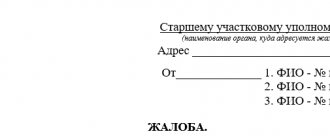Issues of financial liability are quite complex. Moreover, when it comes to the responsibility not of individual employees, but of the whole team. We decided to talk in detail about what is the meaning of collective responsibility and how to establish it correctly? From this article you will learn what you need to pay attention to when drawing up written agreements on financial liability and how important it is to carry out a timely and complete inventory of the property entrusted to employees under the agreement every time. Remember that inattention to small things can lead to huge and sometimes irreparable financial losses.
Part 1 art. 245 of the Labor Code of the Russian Federation allows us to identify three main conditions under which it is possible to introduce collective (team) financial liability.
Condition 1. Performing by employees certain types of work related to the direct maintenance or use of monetary, commodity valuables or other property (storage, processing, transportation, sale of transferred valuables, etc.).
Condition 2. Joint performance of work by employees when it is impossible to differentiate the responsibility of each employee for causing damage.
Condition 3. Impossibility of concluding agreements with employees on full individual financial responsibility.
What is KMO?
KMO is a form of loss coverage. The funds are paid to the employer. All members of the work collective bear responsibility for damage. In this case, a specific culprit may not be identified. Collective responsibility is relevant only for those categories of employees who cannot bear personal responsibility.
Within the framework of the KMO, money cannot be recovered from all employees without exception. Penalty does not apply to these employees:
- Those on sick leave.
- Acceptance into the company after inventory, during which damage is addressed.
The main goal of KMO is to ensure careful handling of the company’s property.
Collective MO within the TC
The Labor Code is the main normative act regulating the relationship between employer and employees. It also regulates the operation of the KMO. Let's consider the articles of the Labor Code concerning collective responsibility:
- Article 232. Contains a general definition of KMO.
- Article 233. Contains general principles for determining the occurrence of KMO and the specifics of proving the fact of damage and its amount.
- Article 238. Specifies the general principles of holding persons accountable. The principle here is that employees are only required to cover direct damages. Indirect damage is not compensated. That is, employees are not responsible for lost profits.
- Article 239. Contains a list of conditions that exclude the liability of employees. These conditions also apply to KMO.
- Article 240 Gives the employer the right to refuse collective compensation. The manager can also reduce the amount of compensation.
- Article 242. It contains the concept of full MO, as well as the age limit for involvement in it.
- Article 243. It specifies a list of cases in which full MO occurs.
- Article 244. Contains the rules for concluding agreements on international defense.
- Article 245 Regulates the application of KMO.
- Article 246. It contains the procedure for determining the amount of damage.
- Article 247 Establishes the obligation to determine the cause of damage.
- Article 248 Regulates the procedure for collection.
Almost all articles relating to ordinary financial liability are also applicable to collective MO.
DKMO about “team” rights
The rights of the team are an important point in the procedure for formalizing its “material” relationship with the employer. DKMO may provide for the following collective rights:
- take part in the acceptance of entrusted property;
- exercise mutual control over the storage system, processing, sale, transportation and other operations with entrusted assets;
- participate in the verification of received property (inventory, audit, etc.);
- get acquainted with the reporting on the entrusted property (about its movement and balances);
- require an inventory of entrusted assets (if the team considers this necessary);
- notify the employer about the removal of team members (including the foreman) who, in the opinion of the team, do not ensure the safety of the company’s assets.
Functions of collective responsibility
Collective MO is similar to individual MO in many ways. Its only difference is that the damage is recovered from the entire team. A team can be understood as a team, department, or unit that is assigned common tasks. Collective MO has a number of advantages over individual MO. Consider these benefits:
- Each employee of the company begins to treat common property more carefully. Employees have to focus on performing their immediate functions.
- Simplifying the implementation of collective projects. Each employee begins to feel his personal responsibility.
- Simplifying accountability. The employer will not have to waste time searching for the culprit. The procedure for covering damages is greatly simplified.
- Simplification of recovery of large damages. According to the law, only an amount equal to his average salary can be withheld from one employee. With collective liability, the possible amount of recovery increases significantly.
The main advantage of collective MO is the ability not to look for the culprit.
Limits of liability
An employee's financial liability can be limited or full.
The limits of an employee’s financial liability are established by Article 241 of the Labor Code of the Russian Federation and are limited by the amount of his average monthly earnings, unless otherwise provided by the Labor Code of the Russian Federation or other federal laws. What does this mean in practice?
If the amount of damage exceeds the employee’s average monthly earnings, then the employee is obliged to compensate only that part of it that is equal to his average monthly earnings (for example, decision of the Venevsky District Court dated May 28, 2018 No. 2-168/2018).
At the same time, the rule on limited financial liability of an employee within the limits of his average monthly earnings is applied in all cases, except for those in respect of which the Labor Code of the Russian Federation or other federal law directly establishes a higher financial liability of the employee, in particular full financial liability.
Full financial liability for the full amount of damage caused is assigned to the employee in certain cases (Article 243 of the Labor Code of the Russian Federation). For example, when an employee is charged with financial liability in full for damage caused to the employer during the performance of the employee’s job duties, intentional infliction of damage, causing damage while under the influence of alcohol, drugs or other toxic substances, as a result of the employee’s criminal actions established by a court verdict, as a result administrative violation, if established by the relevant government body (clause 4 of the Resolution of the Plenum of the Armed Forces of the Russian Federation dated November 16, 2006 No. 52, letter of the Rostrud of the Russian Federation dated October 19, 2006 No. 1746-6-1).
That is, with full financial liability, the employee must fully compensate the company for the entire amount of damage caused (Articles 242 and 243 of the Labor Code of the Russian Federation).
Termination of an employment contract after damage has been caused by a former employee does not entail his release from financial liability. By law, the employee is obliged to compensate the employer for direct actual damage caused to him (Article 238 of the Labor Code of the Russian Federation). In this case, lost income (lost profits) cannot be recovered from the employee.
Grounds for involvement in collective IR
KMO is relevant only for organizations operating in certain industries:
- Sales.
- Catering.
- Construction.
- Financial work.
- Work that involves accepting payments.
- Creation and storage of documents.
- Carrying out audits and revisions.
- Mediation in the field of trade.
- Storing any objects.
The conditions for the onset of KMO are stipulated in Article 243 of the Labor Code. In particular, these are the following circumstances:
- Proven shortages, damage to company property during working hours.
- Intentional damage.
- Damage resulting from the disclosure of a trade secret.
- Damage to company employees caused outside of working hours.
KMO is applicable only when the case of damage is proven.
When is a CMO agreement invalid?
An agreement on collective international defense can only be concluded if these conditions are simultaneously met:
- Employees are over 18 years of age.
- The specialty of the employees is included in the list of professions to which the MO is applicable.
If an agreement on KMO is drawn up with employees whose specialty is not included in the list, it is declared invalid. This list was approved by Resolution of the Ministry of Labor No. 85 of December 31, 2002.
The agreement is also invalidated when the employer fails to fulfill its obligations. And its main obligation in this context is to ensure the protection of property. If protection is not provided, the employer's failure to act is considered negligence. In this case, employees do not need to pay damages based on the agreement.
WHAT DAMAGE ARE WE TALKING ABOUT?
An employee can cause damage to the employer in various ways, for example:
• steal material assets from him (money, goods, equipment, fixed assets);
• fail to protect inventory assets (hereinafter referred to as goods and materials) entrusted to him for work, transportation, use, protection, etc.;
• commit other actions that cannot be qualified under the Criminal Code of the Russian Federation as theft, but leading to unlawful depreciation of the employer’s property (embezzlement, embezzlement, committing fraudulent acts, etc.).
There are a great many examples of an employee causing material damage to an employer:
• stole goods from a warehouse;
• transferred money using software to a third-party company;
• squandered the entrusted money;
• sold the entrusted equipment;
• accidentally damaged or destroyed it, etc.
However, most often the biggest difficulty is not to establish and prove the method of causing material damage, but to collect all the data necessary to recover this damage from the employee. This procedure is most complex and controversial in cases where the damage was caused by several workers working in the same area and with the same inventory items. And in this case we are talking about collective (team) financial responsibility.
Legality of introduction
The most common KMO in stores. Is this legal? The introduction of collective responsibility is legal if all formalities are met:
- Availability of an organization order.
- Familiarization of employees with the order against signature.
- Conclusion of the CMO agreement.
The sample agreement is specified by a resolution of the relevant body. However, this sample is considered advisory. The manager has the right to make adjustments to it in accordance with his own needs.
If all legal grounds for introducing KMO are present, the employee is required to sign the appropriate agreement. If he does not do this, he may be dismissed on the grounds of failure to perform job functions.
The KMO action begins from the moment the fact of damage is established. The amount to cover the damage is divided equally between all representatives of the team who signed the agreement. Employees may not agree with the manager's decision. In this case, you cannot simply refuse to pay. You need to file a claim in court. Court representatives separately determine the amount of damage. Conflicts concerning KMO are resolved by the World Court or the labor commission.
Distribution of responsibilities between team members
MO is distributed among employees taking into account their tariff rates. These factors are also taken into account:
- Time worked (including sick leave and vacations).
- The degree of guilt of the employee.
The most difficult moment is determining the degree of guilt. Employees can cover damages voluntarily. In this case, MO is usually distributed equally among team members. If employees do not agree with the manager’s decision, the extent of damage is determined by the court. Responsibility is relieved from employees in these cases:
- Definitely definitely the culprit.
- The innocence of the team has been established.
- There was negligence on the part of the employer.
In the presence of these circumstances, employees, except for the guilty person, do not pay anything to the employer.
Documenting
Employees can be involved in collective MO based on the manager’s order and agreement. Let's consider the correct execution of these documents.
Manager's order
The order must record this information:
- Company name.
- Grounds for KMO (Article 245 of the Labor Code).
- Instructions for the introduction of KMO (the instructions must be preceded by the word “I order”).
- Indication of the composition of the team (position, full name).
- Appointment of a team leader (his full name must be indicated).
- Sending instructions to the HR department about the need to conclude a CMO agreement.
- Sending instructions to the chief accountant regarding the development of Property Accounting Rules.
- Signature of the general director.
- Signature of employees confirming familiarization with the order.
Usually the manager also indicates that he reserves control over the execution of the order.
KMO Treaty
Sometimes an employer replaces a collective labor agreement with several individual responsibility agreements. This is not entirely legal. If collective responsibility is what is needed, an appropriate agreement must be drawn up. When drawing up an agreement, you need to remember these rules:
- The subject of the contract is property needed for professional activities.
- The agreement can only be concluded with employees over 18 years of age.
- The contract must contain a list of property for damage to which money will have to be paid.
- Cases are recorded in which the employee is released from liability.
- The procedure for determining the amount of damage and the procedure for challenging the manager’s decision in court are indicated.
Special cases of the onset of MO may be recorded. For example, disclosure of a trade secret, which resulted in damage. At the end of the document, the manager puts his signature. A CMO agreement can only be drawn up if the following circumstances exist:
- Availability of employment contracts with employees.
- Availability of job descriptions.
- Availability of a KMO order.
- There is a protocol of the meeting on the adoption of the collective MO.
IMPORTANT! If an individual contract on medical education has been concluded with an employee, the civil medical service does not apply to him.
General and mandatory points of the DKMO
General (managerial) aspects of the operation of the DKMO are reflected in a separate section and include the following:
- compliance with the principle of voluntariness when forming a team;
- appointment of a foreman taking into account the opinion of the team;
- assignment of duties to a temporarily absent foreman;
- an unconditional requirement to re-conclude the DKMO when the team changes by 50%;
- entering additional information into the DKMO, which does not lead to its re-conclusion, upon the admission or departure of its members from the brigade.
An important part of the DKMO is the section on the rights and obligations of the parties to the agreement. The team and the employer are subject to a set of mandatory procedures, which can be grouped into 3 groups:
- the team is obliged to ensure the safety of the entrusted property, and the employer is obliged to organize the necessary conditions for this;
- the team is obliged to promptly inform management about cases that threaten the safety of property, and the employer is also obliged to promptly influence their elimination;
- the foreman must monitor the movement and take into account the balances of the entrusted assets, as well as report on this, and the employer must provide appropriate conditions for this.
In addition to those indicated, the employer is assigned 2 additional groups of responsibilities:
- provide the team with up-to-date information about current legislation in the field of liability, regulatory nuances of the procedure for storage and other operations with property;
- take into account the opinion of the brigade in various issues related to the formation of the brigade, or when considering the validity of requests for an inventory of assets entrusted to the brigade.
Learn the nuances of conducting and registering an inventory in the materials posted on our website:
- “Inventory order - sample filling”;
- “Unified form No. INV-3 - form and sample”.
The same section of the DKMO establishes the rights of the brigade - we’ll talk about this later.








